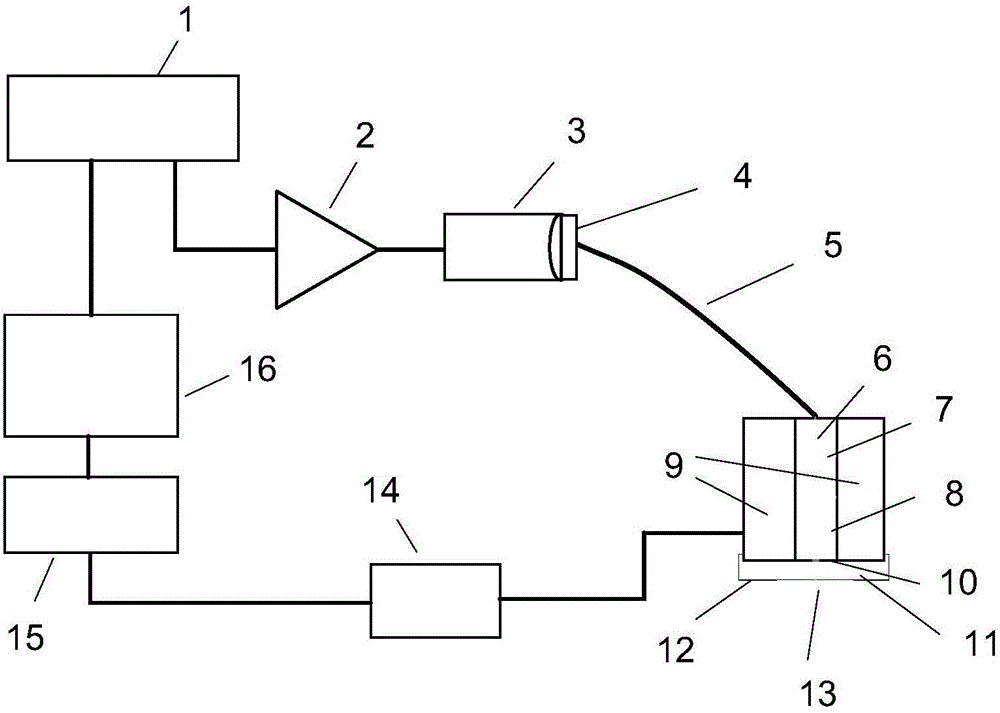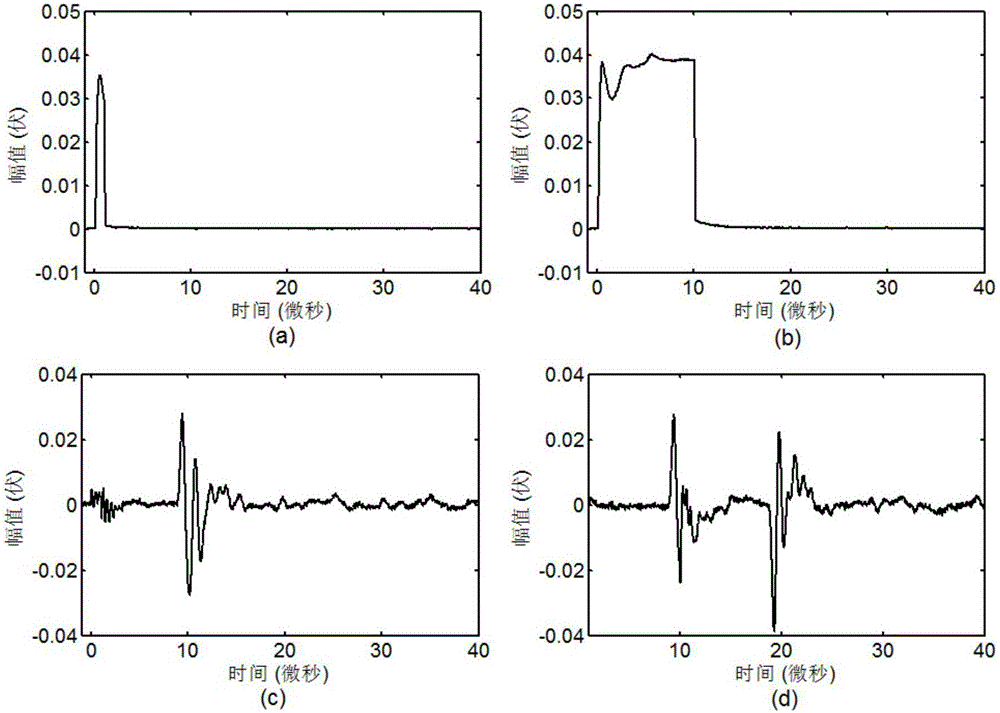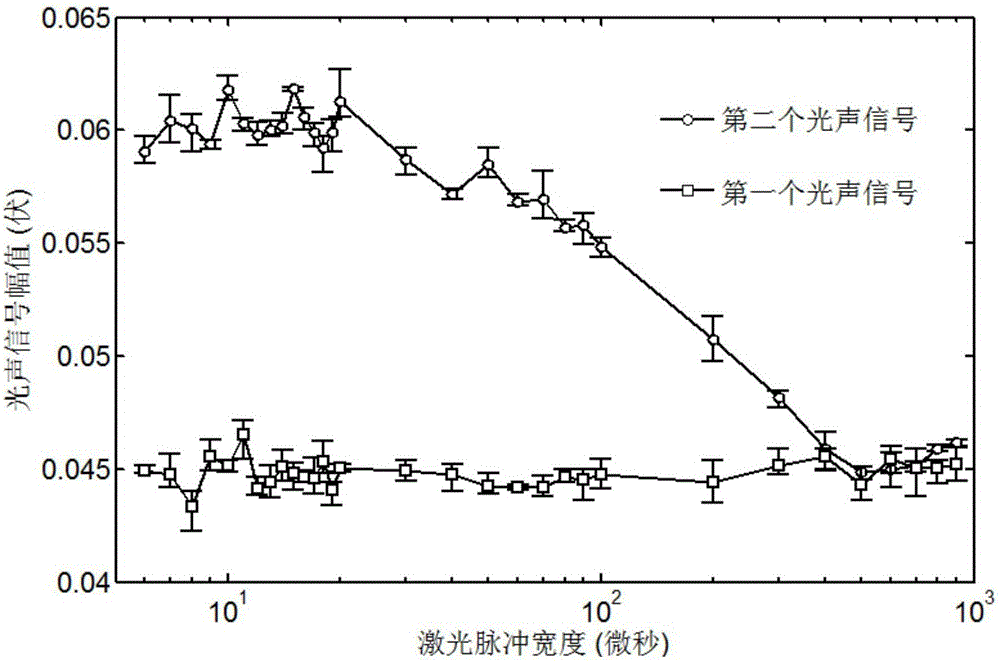Method and device for inducing double nonlinearity photo-acoustic signals through single laser pulse
A technology of nonlinear light and laser pulses, which is applied in the direction of measuring devices, material analysis through optical means, instruments, etc., to achieve the effect of improving sensitivity and resolution, and improving signal-to-noise ratio
- Summary
- Abstract
- Description
- Claims
- Application Information
AI Technical Summary
Problems solved by technology
Method used
Image
Examples
Embodiment 1
[0079] The measured object is chosen as a black rubber wire because it has a relatively strong light absorption coefficient and a large thermal diffusion relaxation time. As a comparative observation, a single photoacoustic signal was also generated with short laser pulses. Using 1us laser pulses, such as figure 2 As shown in a, the traditional short laser pulse can only generate a photoacoustic signal, such as figure 2 as shown in c. On the other hand, using 10us laser pulses, such as figure 2 As shown in b, we can observe two photoacoustic signals, such as figure 2 shown in d. It can be seen that the two photoacoustic signals are respectively generated at the rising edge and falling edge of the laser pulse, and the time delay between them is equal to the width of the pulse (10us). The waveforms of the two photoacoustic signals are highly correlated, but have opposite phases. This is because they come from the same object under test. The first photoacoustic signal is...
Embodiment 2
[0083] In order to show that the nonlinear photoacoustic technique proposed in the present invention is superior to the existing linear photoacoustic technique in distinguishing the contrast of different samples, in this example, three different samples (black ink, gold nanorods, IR825 dye) were put into the same plastic thin tube. These samples all have strong and similar linear absorption coefficients under 808nm wavelength laser irradiation. From Figure 5 It can be seen in b that the amplitude of the first photoacoustic signal generated by the three samples due to linear absorption is almost the same (20 mV). However, the magnitude of the second photoacoustic signal caused by nonlinear effects is quite different. Subtracting the amplitudes of the two signals, we can get a comparison diagram of the nonlinear enhancement of the photoacoustic signal of the three samples, Figure 5 as shown in c. It can be seen that the part of nonlinear enhancement can better distinguish ...
PUM
 Login to View More
Login to View More Abstract
Description
Claims
Application Information
 Login to View More
Login to View More - R&D
- Intellectual Property
- Life Sciences
- Materials
- Tech Scout
- Unparalleled Data Quality
- Higher Quality Content
- 60% Fewer Hallucinations
Browse by: Latest US Patents, China's latest patents, Technical Efficacy Thesaurus, Application Domain, Technology Topic, Popular Technical Reports.
© 2025 PatSnap. All rights reserved.Legal|Privacy policy|Modern Slavery Act Transparency Statement|Sitemap|About US| Contact US: help@patsnap.com



